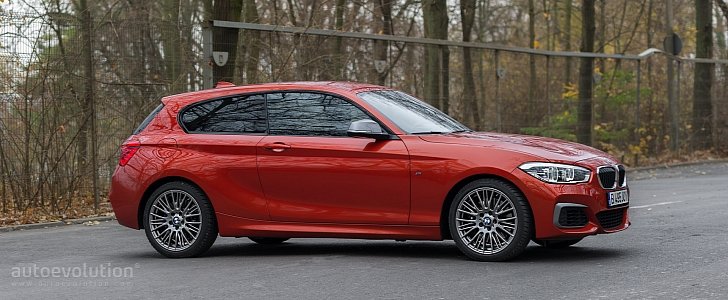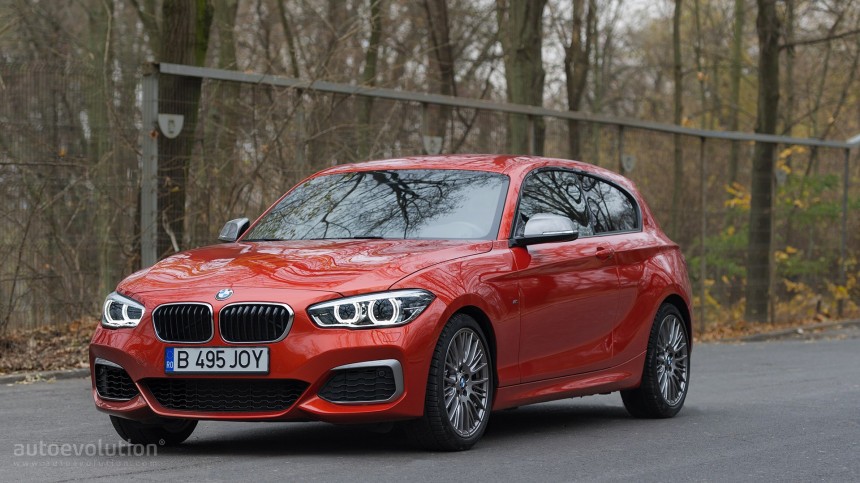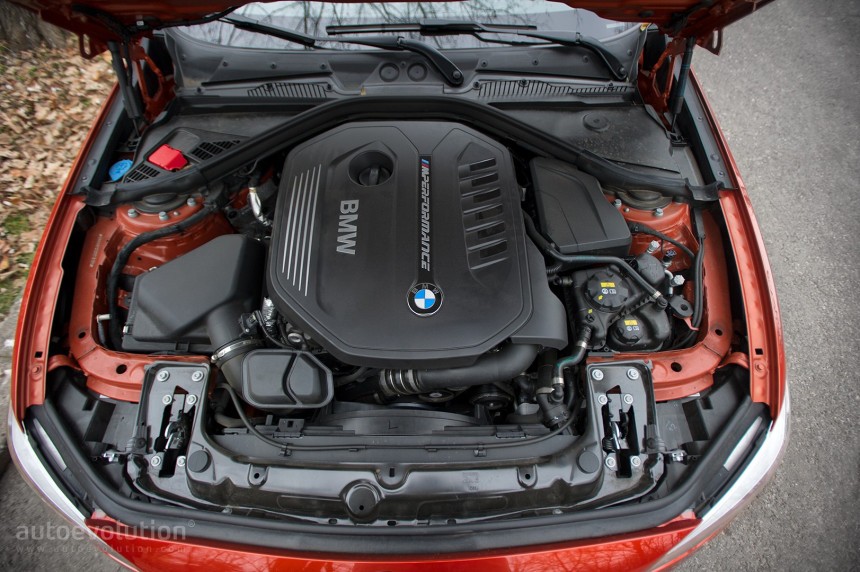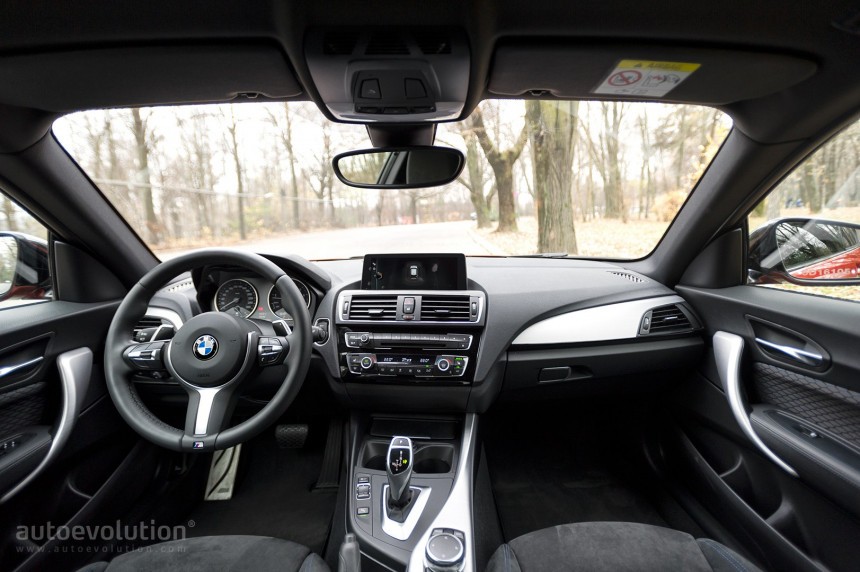Driven: 2018 BMW M140i - The End of An Era
As with any other hot hatch, one begins a BMW M140i test drive with a heavy right foot and, but I also drove this specific model with a heavy heart.
For those not yet in the know, BMW has caved into the requests of bean counters and will soon no longer offer the only rear-wheel-driven compact hatch on the market. No, it won’t skip a future generation of the 1 Series, it will just replace it with one based on an FWD architecture.
The reasons are obviously costs-related, although this switch from RWD to FWD will also come with some inherent benefits, not of which being searched by purist drivers, though.
I’m am of course talking about the Achilles’ heel usually found on just about every BMW 1 Series, no matter what generation – its heavily compromised interior space. It is not only cheaper but also a lot easier to package a transverse engine instead of a longitudinal one in a compact car. Less hood length and no transmission tunnel toward the rear translate into more passenger space and a larger luggage compartment.
On the other hand, most of the engines featured on the next 1 Series generation will also be paired with an all-wheel-drive system, meaning that a transmission tunnel will actually be featured on the car. Nevertheless, it will be a lot bigger inside, that’s for sure.
Speaking of engines, and also returning to the drawbacks I had begun mentioning earlier, the 2020 1 Series will also lose yet another one of its exclusive features, its straight-six powerplants. Since BMW only makes transverse straight-sixes with petite displacement for its BMW Motorrad division, the famed 3.0-liter won’t fit under an FWD car.
That said, the current BMW M140i, especially in RWD-guise, is probably one of the closest models to a “pure BMW” this side of the M2 and M240i.
Perfect 50:50 weight distribution on the two axles, rear-wheel-drive, and a howling straight-six fitted longitudinally and with plenty of oomph are almost always the best ingredients that make a sports car.
In our case, it’s more of a Q-car as well, since most of the exclusive M bits are actually found underneath the metal, despite the rather high number of M badges adorned on almost every side of the car.
Keep in mind that this is an M Performance model, not a true M car, although the driving feel would definitely allow it to be called whatever it wants.
The turbocharged 3.0-liter upfront is not a more powerful evolution of its predecessor, which was fitted on the non-facelifted M135i, but a new engine altogether. Internally codenamed B58, it’s based on the latest modular family of BMW engines and trounces its N55 predecessor from almost every angle.
With 340 horsepower and up to 500 Nm (369 lb-ft) of torque on tap, the M140i can haul bottoms like there is no tomorrow in a straight line, although the xDrive all-wheel-drive version is obviously more capable in this regard.
Its top speed is, per the German Gentlemen’s Agreement, limited to 250 kph (155 mph), but the 4.6 seconds required to go from 0-100 kph (62 mph) are where the M140i shines. The xDrive version is, as mentioned before, even quicker, but it’s the RWD model that’s obviously better to flick around corners.
Despite being turbocharged, the turbo lag is minimal, and the maximum torque figures are available from as low as 1520 rpm all the way to 4500 rpm. Along with the traditional straight-six howl, it makes for quite a competent hot hatch as long as the roads are dry.
When they aren’t so dry, and the stability control gets turned off, you can probably imagine that the torque allows for plentiful sideways action. Sadly, only the xDrive version can get a limited slip differential on most markets, but you won’t miss it that much outside of the track.
Our test car was fitted as standard with the ZF 8HP 8-speed automatic transmission, which would typically make purists frown at the thought of not being able to row their own gears. That said, you should know that BMW probably makes the best pairings between engines and this transmission in the business, since they come with specific software that practically reads your mind when changing gears.
Plus, a manual transmission would have probably brought the car too close to its spiritual predecessor, the highly coveted 1M Coupe.
Despite being electrically powered, the steering is as precise as they get and offers a lot more feedback than you would expect from such a solution. These qualities do come in handy whenever your right foot gets a little heavier during cornering, as they allow you to send the car’s front end to wherever you want to go throughout a longer powerslide.
But enough about hooning the M140i, since you’re only legally allowed to do that on closed roads or racing circuits anyway, what about the everyday duties of a car that can take you faster than usual from point A to point B?
Well, despite its downright sporty credentials, the M140i in 3-door guise is as tame to live with as a three-cylinder 118i, especially when fitted with the adaptive M chassis. Two buttons on the center console can let you switch the suspension hardness from downright plush to a hot-hatch-like hardness that really puts those sports M seats to the test keeping you hugged during hard cornering.
The only downside, from a comfort point of view, is found when seating on the rear seats, which have poor access in the 3-door version and once you get there the seating position is kind of cramped. Still, it’s a lot roomier than its more expensive M240i brother.
As I mentioned before, it’s pretty difficult to spot an M140i from a regular 1 Series fitted with the M Sport package, for example, but that is not necessarily a bad thing for some. Sure, there is an M badge on each front fender, and on each wheel, the front and rear bumpers have a specific design, and so are the kidney grilles.
That said, I find its subtle character to be one of the model’s strong points since not everyone wants a hot hatch that draws crowds whenever you enter the parking area of a supermarket. From some points of view, the M140i is therefore like a wolf in sheep’s clothing, and those are the scariest type of wolves if you think about it.
Sure, the third generation of the 1 Series is expected to have an M140i successor, and it will probably run circles around the current model regarding performance on paper. But never in a million years will it have the soul and driving feel of the RWD 1 Series, especially in M Performance guise, the last of its kind.
The reasons are obviously costs-related, although this switch from RWD to FWD will also come with some inherent benefits, not of which being searched by purist drivers, though.
I’m am of course talking about the Achilles’ heel usually found on just about every BMW 1 Series, no matter what generation – its heavily compromised interior space. It is not only cheaper but also a lot easier to package a transverse engine instead of a longitudinal one in a compact car. Less hood length and no transmission tunnel toward the rear translate into more passenger space and a larger luggage compartment.
On the other hand, most of the engines featured on the next 1 Series generation will also be paired with an all-wheel-drive system, meaning that a transmission tunnel will actually be featured on the car. Nevertheless, it will be a lot bigger inside, that’s for sure.
That said, the current BMW M140i, especially in RWD-guise, is probably one of the closest models to a “pure BMW” this side of the M2 and M240i.
Perfect 50:50 weight distribution on the two axles, rear-wheel-drive, and a howling straight-six fitted longitudinally and with plenty of oomph are almost always the best ingredients that make a sports car.
In our case, it’s more of a Q-car as well, since most of the exclusive M bits are actually found underneath the metal, despite the rather high number of M badges adorned on almost every side of the car.
Keep in mind that this is an M Performance model, not a true M car, although the driving feel would definitely allow it to be called whatever it wants.
The turbocharged 3.0-liter upfront is not a more powerful evolution of its predecessor, which was fitted on the non-facelifted M135i, but a new engine altogether. Internally codenamed B58, it’s based on the latest modular family of BMW engines and trounces its N55 predecessor from almost every angle.
With 340 horsepower and up to 500 Nm (369 lb-ft) of torque on tap, the M140i can haul bottoms like there is no tomorrow in a straight line, although the xDrive all-wheel-drive version is obviously more capable in this regard.
Its top speed is, per the German Gentlemen’s Agreement, limited to 250 kph (155 mph), but the 4.6 seconds required to go from 0-100 kph (62 mph) are where the M140i shines. The xDrive version is, as mentioned before, even quicker, but it’s the RWD model that’s obviously better to flick around corners.
When they aren’t so dry, and the stability control gets turned off, you can probably imagine that the torque allows for plentiful sideways action. Sadly, only the xDrive version can get a limited slip differential on most markets, but you won’t miss it that much outside of the track.
Our test car was fitted as standard with the ZF 8HP 8-speed automatic transmission, which would typically make purists frown at the thought of not being able to row their own gears. That said, you should know that BMW probably makes the best pairings between engines and this transmission in the business, since they come with specific software that practically reads your mind when changing gears.
Plus, a manual transmission would have probably brought the car too close to its spiritual predecessor, the highly coveted 1M Coupe.
Despite being electrically powered, the steering is as precise as they get and offers a lot more feedback than you would expect from such a solution. These qualities do come in handy whenever your right foot gets a little heavier during cornering, as they allow you to send the car’s front end to wherever you want to go throughout a longer powerslide.
But enough about hooning the M140i, since you’re only legally allowed to do that on closed roads or racing circuits anyway, what about the everyday duties of a car that can take you faster than usual from point A to point B?
The only downside, from a comfort point of view, is found when seating on the rear seats, which have poor access in the 3-door version and once you get there the seating position is kind of cramped. Still, it’s a lot roomier than its more expensive M240i brother.
As I mentioned before, it’s pretty difficult to spot an M140i from a regular 1 Series fitted with the M Sport package, for example, but that is not necessarily a bad thing for some. Sure, there is an M badge on each front fender, and on each wheel, the front and rear bumpers have a specific design, and so are the kidney grilles.
That said, I find its subtle character to be one of the model’s strong points since not everyone wants a hot hatch that draws crowds whenever you enter the parking area of a supermarket. From some points of view, the M140i is therefore like a wolf in sheep’s clothing, and those are the scariest type of wolves if you think about it.
Sure, the third generation of the 1 Series is expected to have an M140i successor, and it will probably run circles around the current model regarding performance on paper. But never in a million years will it have the soul and driving feel of the RWD 1 Series, especially in M Performance guise, the last of its kind.
About the author: Alex Oagana

Alex handled his first real steering wheel at the age of five (on a field) and started practicing "Scandinavian Flicks" at 14 (on non-public gravel roads). Following his time at the University of Journalism, he landed his first real job at the local franchise of Top Gear magazine a few years before Mircea (Panait). Not long after, Alex entered the New Media realm with the autoevolution.com project.
Full profile








































































